Fishing rods Poles
()Sort by
-

Garbolino K2 Express Power ELC Kit
89.99 €
-

Shimano Fishing Power Loop 5 Kit
130.99 €
-

Shimano Fishing Aero Pro Grey Shallow Match Top Kit
121.49 €
-

Shimano Fishing Gen-Z Allround 4 Pole Kit
205.25 €
-

Preston Innovations DWA F1 Short Stop Grey Kit
58 €
-

Matrix Fishing MTX-E3 11.50 m Mini Extension
39.49 €
-

Matrix Fishing MTX-E4 Section 3
153.99 €
-

Matrix Fishing MTX-E4 Section 4
227.99 €
-

Garbolino Express Big Bore Set
69.99 €
-

Garbolino K1 Compact Power Strong Elastic Control Set
78.99 €
-
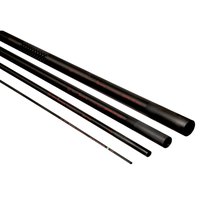
Browning Xitan Z8-3 Advance Kit
335.99 €
-

Cresta Carpetition Kupping Kit
30.73 €
-

Shimano Fishing Gen-Z UK Power EV 2 Kit
78.99 €
-

Shimano Fishing Aero X7 Competition Pole Rod
2969.99 €
-

Preston Innovations Power Top 2 11.00 m Kit
58.99 €
-
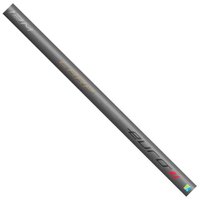
Preston Innovations Euro Carp 1000 Top 3 13.00 m Kupping Kit
87.99 €
-

Preston Innovations Euro Carp Grey Power Section
31.99 €
-

Preston Innovations Response Whip Pole Rod
70.99 €
-

Preston Innovations Superium 5/6 50/70/90/Carp Mini Extension
58.99 €
-

Matrix Fishing Torque Carp 8.50 m Butt Section
68.99 €
-

Matrix Fishing MTX-E1 Printed 11.50 m Butt Section
126 €
-

Matrix Fishing MTX-E1 Section 6
104.99 €
-

Matrix Fishing MTX-E2 11.50 m Mini Extension
38.99 €
-

Matrix Fishing MTX4 V2 Short Butt 3 Section
82.99 €
-

Matrix Fishing MTX1 V2 Section 7
164.99 €
-

Matrix Fishing MTX V2 Margin 1 Section 8.70 m Butt Section
94.49 €
-

Matrix Fishing MTX V2 Margin 2 Section 5
94.49 €
-

Matrix Fishing MTX4 Short Section 3
63.99 €
-

Matrix Fishing Torque Euro Carp 9.00 m Butt Section
62.49 €
-

Matrix Fishing MTX4 Mini 1 Extension
58.99 €
-

DAM Intenze Carp Pole Rod
136.99 €
-

Mivardi Team TMX Power Kit
74.99 €
-

Garbolino K2 Destructor Carp SKY ELC Kit Extension
80.99 €
-

Garbolino K2 Kit Extension
101.99 €
-

Garbolino Slimax/World G/ One/Ultym Mini Extension Elements 5/6
49.99 €
-

Garbolino Extension For Series 9007/9008 Extender
61.99 €
-

Garbolino Mini Extension Reversible
38.49 €
-

Browning Xitan Advance Pole Protector Pole Protector 6/7 Extension
76.49 €
-

Browning Sphere Silverlite System 9/10 Extension
26.99 €
-

Browning Xitan Z18L Advance E/5 Kit
376.49 €
-

Browning 2eX-S Match Carp DL Uni Pole Protector 7/8 Extension
42.99 €
-
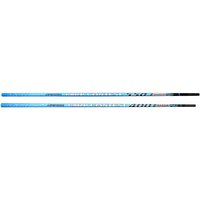
Cresta Carp Contest Pull Margin Pole Rod
69.99 €
-

Cresta Carp Controller Section 1
7.49 €
-
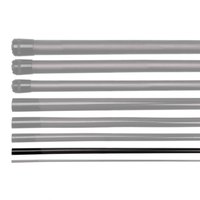
Cresta Carp Controller Section 2
7.49 €
-
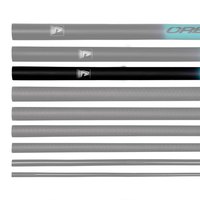
Cresta Stallion Extrema 6.00 m Butt Section
62.99 €
-
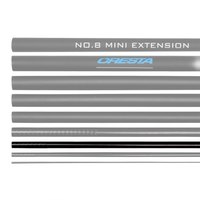
Cresta Stallion Power XS 550 Section 3
18 €
-

Shimano Fishing Aero Pro Match Top Kit
113 €
-

Shimano Fishing Aero Pro Power Top Kit
96.99 €
-

Shimano Fishing Aero X5 Competition Pole Rod
1619.99 €
-

Shimano Fishing Aero Pro F1 Top Kit
52 €
-

Shimano Fishing Aero Pro Grey Shallow F1 Top Kit
56.99 €
-

Shimano Fishing Aero Pro Grey Shallow Power Top Kit
106.99 €
-

Shimano Fishing Aero Super Match Top Kit
89.99 €
-

Shimano Fishing Aero Pro Competition Pole Rod
4769.99 €
-
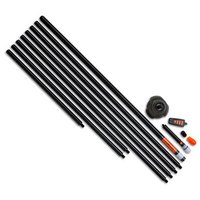
Fox International Halo 1 Pole Kit
174.49 €
-

Mikado Trython Pole Rod
22.99 €
-

Mikado Katsudo Slim Tournament Pole Rod
65.99 €
-

Mikado Noctis Pole Rod
57.99 €
-

Preston Innovations Superium F1 Short Kit
58 €
-

Preston Innovations Superium X10 Pole Kit
671.99 €
-

Preston Innovations Superium F1 Grey Kit
66.99 €
-

Preston Innovations Edge Monster Margin Kit
232.49 €
-

Preston Innovations Masterclass XS Cupping Kit
44.99 €
-

Preston Innovations DWA Pulla Kit
70.99 €
-
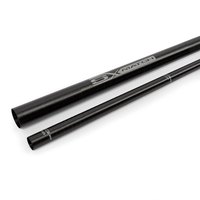
Preston Innovations Superium Match Kit
66.99 €
-

Preston Innovations Euro XS Carp 400 Pole Kit
414.99 €
-
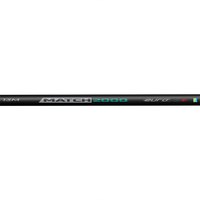
Preston Innovations Euro XS Match 2000 Pole Kit
2088.99 €
-
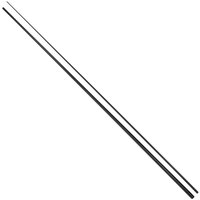
Preston Innovations Euro XS Universal 8 Premium Mini Extension
78.99 €
-

Preston Innovations Superium F1 Short Grey Kit
58 €
-

Preston Innovations Euro XS Carp 1000 Pole Kit
1292.99 €
-

Preston Innovations Euro XS Edge Pole Rod
66.99 €
-

Preston Innovations Euro XS Carp 800 Pole Kit
745.99 €
-

Preston Innovations Protype F1 Short Stop Kit
49.99 €
-

Preston Innovations Superium Carp Pole Kit
1909.99 €
-
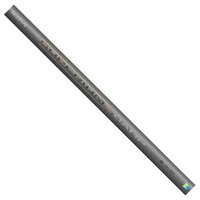
Preston Innovations Superium X30 Pole Kit
1312.99 €
-

Preston Innovations Superium X90 Pole Kit
3679.99 €
-

Preston Innovations Response XS90 Match Top 3 Kit
210.99 €
-

Preston Innovations Edge Monster Kit
182.99 €
-

Preston Innovations Masterclass XS4 Pole Kit
447.99 €
-

Preston Innovations Masterclass XS6 Pole Kit
745.99 €
-

Preston Innovations Masterclass XS Top 4 Kit
161.99 €
-

Preston Innovations Euro Carp Premium Universal Top 2 Kupping Kit
91.49 €
-

Preston Innovations Response System Whip Pole Rod
331.99 €
-

Preston Innovations DWA Roller Pulla Short Stop Kit
58 €
-

Preston Innovations Response Whip 4.00 m Kit
82.99 €
-
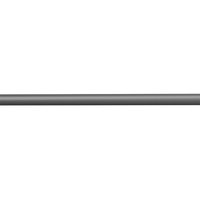
Preston Innovations DWA ROLLER PULLA Kit
70.99 €
-

Preston Innovations Euro X2 Carp 600 Top 2 Kit Section
74.99 €
-
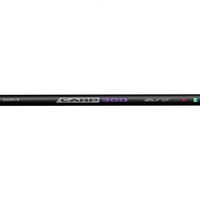
Preston Innovations Euro XS Carp 300 Pole Rod
331.99 €
-

Preston Innovations Euro XS Universal 3/4 Premium Mini Extension
74.99 €
-
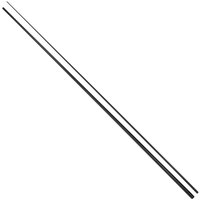
Preston Innovations Euro XS Universal 5/6 Premium Mini Extension
78.99 €
-
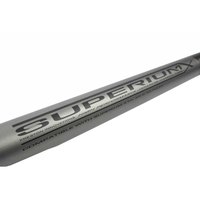
Preston Innovations Superium Multi 50/70/90 Extension
198.99 €
-

Preston Innovations Euro X2 Carp 1000 Top 2 Kit Section
95.99 €
-

Preston Innovations Euro X2 Carp 400 Top 2 Kit Section
74.99 €
-
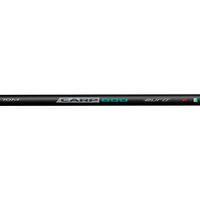
Preston Innovations Euro XS Carp 800 Pole Rod
414.99 €
-
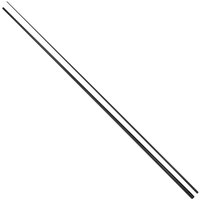
Preston Innovations Euro XS Universal 7 Premium Mini Extension
82.99 €
-
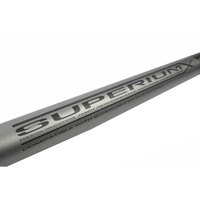
Preston Innovations Superium 7/8 10/20/30 Mini Extension
68.99 €
How to choose a fishing pole?
Pole rodA pole rod is a type of fishing rod that is typically long and very flexible. It is primarily used in coarse fishing or match fishing, especially in European angling styles. Unlike traditional fishing rods that have separate sections, a pole rod is a single, continuous length of material, usually made of carbon fiber or fiberglass. It does not have reel seats or guides like conventional rods and the fishing line is directly connected to the pole rod.
Pole kit
A pole kit refers to a complete package or set that includes all the necessary components for pole fishing. It typically includes a pole rod, sections or extensions, top kits, and various accessories. You can buy the pole kit from Shimano Fishing, Daiwa, Mikado, Preston Innovations, and Matrix Fishing.
Choosing a fishing pole also known as a fishing rod involves considering several factors to match the rod´s characteristics with your fishing style, target species, and fishing environment. Here are steps to help you choose the right fishing pole:
Determine fishing technique:
Different fishing techniques spinning, baitcasting, fly fishing, etc. require specific types of rods designed for those techniques. Determine which fishing method youll primarily use to narrow down your options.
Rod length:
Consider the rod´s length based on your fishing environment and preferences. Longer rods generally cast farther and provide better line control, while shorter rods offer better maneuverability in tight spaces.
Rod power and action:
Power refers to the rod´s strength and its ability to handle weight and pressure. Rod power ranges from ultralight to heavy. Lighter power rods are suitable for smaller fish and lighter lines, while heavier power rods handle larger fish and heavier lines.
Action describes how much and where along the rod the bend occurs. Fast action rods bend primarily at the tip, offering sensitivity and quicker hook sets, while slower action rods bend more along the length, providing more power to fight fish.
Choose rod power and action based on the size of the fish you´ll be targeting and the type of fishing lures or baits you´ll be using.
Material and construction:
Fishing rods are commonly made from graphite, fiberglass, or a blend of both composite. Graphite rods are lightweight, sensitive, and offer faster actions, while fiberglass rods are more durable and forgiving with slower actions.
Consider the rod´s material and construction for durability, sensitivity, and the specific performance characteristics you prefer.
Reel seat and guides:
Ensure the rod has a quality reel seat that securely holds your reel in place. Check the guides the rings through which the line passes to ensure they are sturdy, smooth, and properly aligned along the rod.
Handle and grip:
Choose a comfortable handle material such as cork or EVA foam and design that suits your grip preference and provides comfort during extended fishing sessions.

























